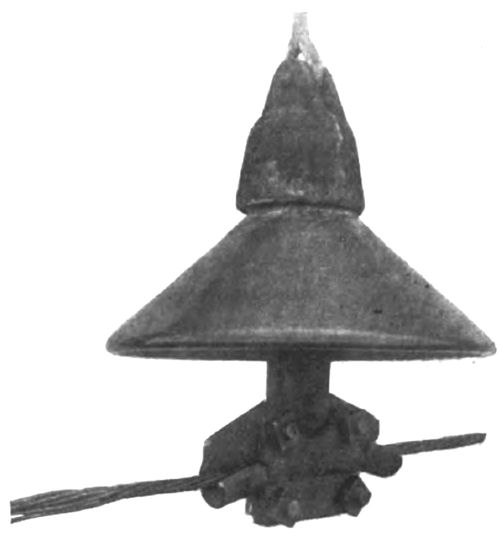[Trade Journal]
Publication: Electrical Review
New York, NY, United States
vol. 51, no. 11, p. 454, col. 2-3
Suspension Type Insulator for High-Voltage Transmission Lines.
The Locke Insulator Manufacturing Company, Victor, N. Y., has designed and placed on the market a suspension type of insulator for high-voltage transmission. The accompanying illustrations give an idea of the appearance and adaptability of this type of insulator. The insulator element is made up of two pieces of porcelain—a short inner shell and an outer flaring shell. These shells are tested individually at a potential of approximately 60,000 volts before assembling, and the assembled element is tested at a potential in excess of 90,000 volts for a period of five minutes. The design of these insulators was developed by J. V. E. Duncan, electrical engineer for Sanderson & Porter, New York city, and W. T. Goddard, electrical engineer of the Locke Insulator Manufacturing Company.
 |
| New Suspension Type Insulator for High-Voltage Transmission. |
This insulator possesses many advantages over the regulation pin-supported type of insulator for about 75,000 volts.
It has great mechanical strength and can be made at a lower cost. The transmission line may be run with one unit, and the insulating element increased at nominal erection expense to at least 100,000 volts, as the increase in the transmission voltage may determine.
| |||
| Method of Applying New Suspension Type High-Voltage Insulators. |
In difficult localities one or more of the units can be carried about, thus taking advantage of the element of portability. The liability to puncture from damage is reduced because of the wider separation between the earth and the conductors. The insulator, being made up of a series of individual elements, it is extremely unlikely that the breakdown of one element will throw the line entirely out of service.
The insulator is said to have an ultimate mechanical strength ranging from 10,000 to 12,000 pounds.

